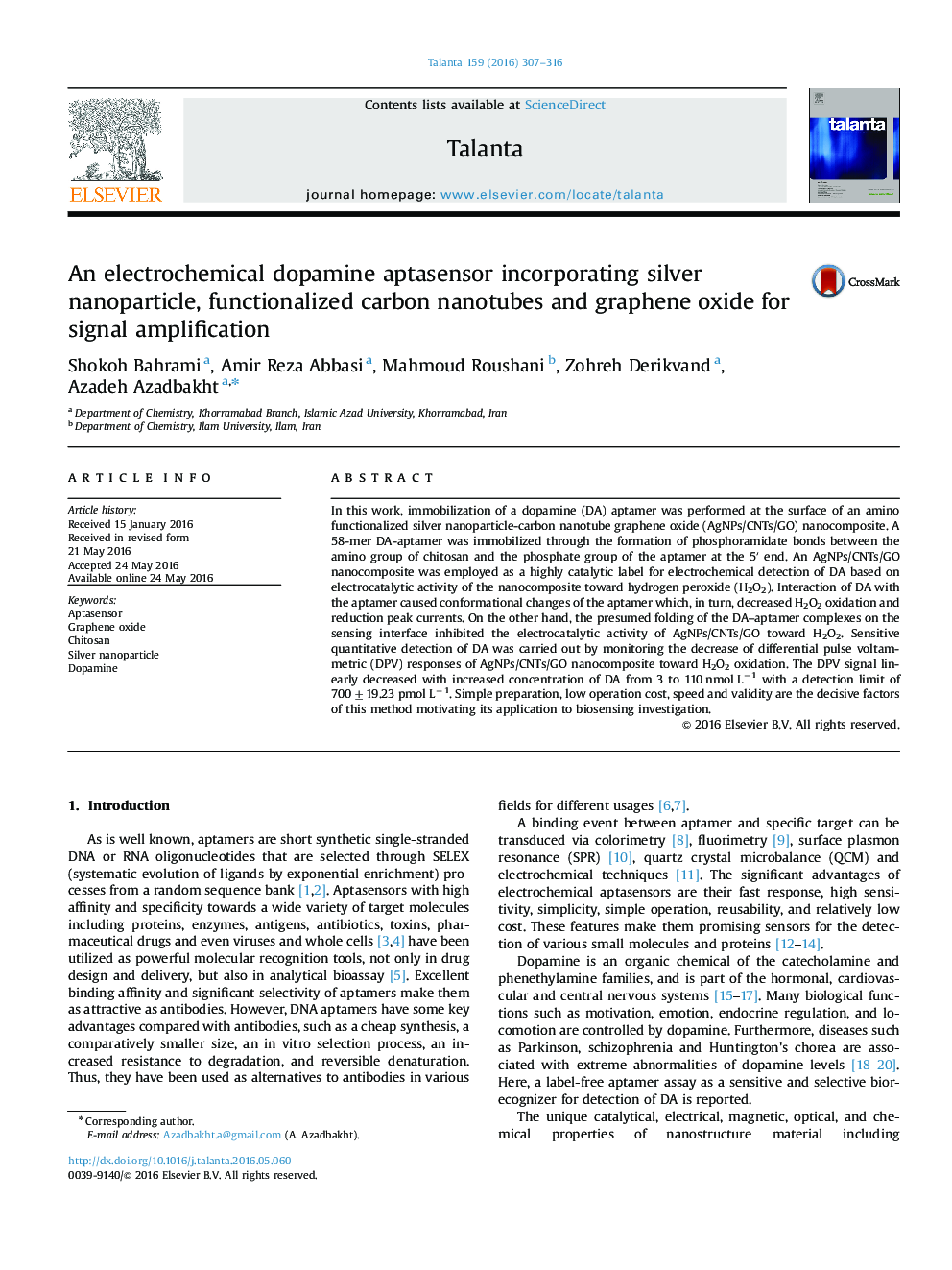| Article ID | Journal | Published Year | Pages | File Type |
|---|---|---|---|---|
| 1241780 | Talanta | 2016 | 10 Pages |
•Simple preparation, low operation cost, speed and validity are the decisive factors of this method motivating its application to biosensing investigation.•The combination of simple and fast one-step way to fabricate high density AgNPs nanocomposites and unique electrocatalytical activity of silver nanoparticle via H2O2 makes this platform as remarkable transduction to prepare DA sensor.•The robustness and stability of aptasensor might be associated with covalent attachment of aptamer through the formation of phosphoramidate bonds between the amino group of chitosan and phosphate group of the aptamer at 5′end.
In this work, immobilization of a dopamine (DA) aptamer was performed at the surface of an amino functionalized silver nanoparticle-carbon nanotube graphene oxide (AgNPs/CNTs/GO) nanocomposite. A 58-mer DA-aptamer was immobilized through the formation of phosphoramidate bonds between the amino group of chitosan and the phosphate group of the aptamer at the 5′ end. An AgNPs/CNTs/GO nanocomposite was employed as a highly catalytic label for electrochemical detection of DA based on electrocatalytic activity of the nanocomposite toward hydrogen peroxide (H2O2). Interaction of DA with the aptamer caused conformational changes of the aptamer which, in turn, decreased H2O2 oxidation and reduction peak currents. On the other hand, the presumed folding of the DA–aptamer complexes on the sensing interface inhibited the electrocatalytic activity of AgNPs/CNTs/GO toward H2O2. Sensitive quantitative detection of DA was carried out by monitoring the decrease of differential pulse voltammetric (DPV) responses of AgNPs/CNTs/GO nanocomposite toward H2O2 oxidation. The DPV signal linearly decreased with increased concentration of DA from 3 to 110 nmol L−1 with a detection limit of 700±19.23 pmol L−1. Simple preparation, low operation cost, speed and validity are the decisive factors of this method motivating its application to biosensing investigation.
Graphical abstractFigure optionsDownload full-size imageDownload as PowerPoint slide
